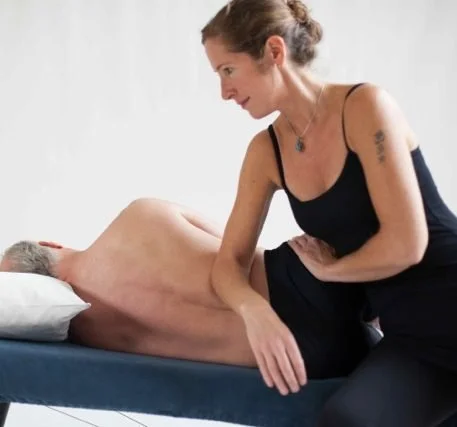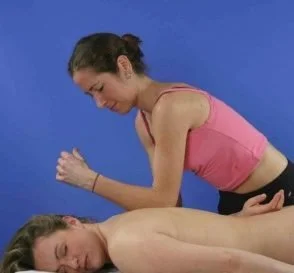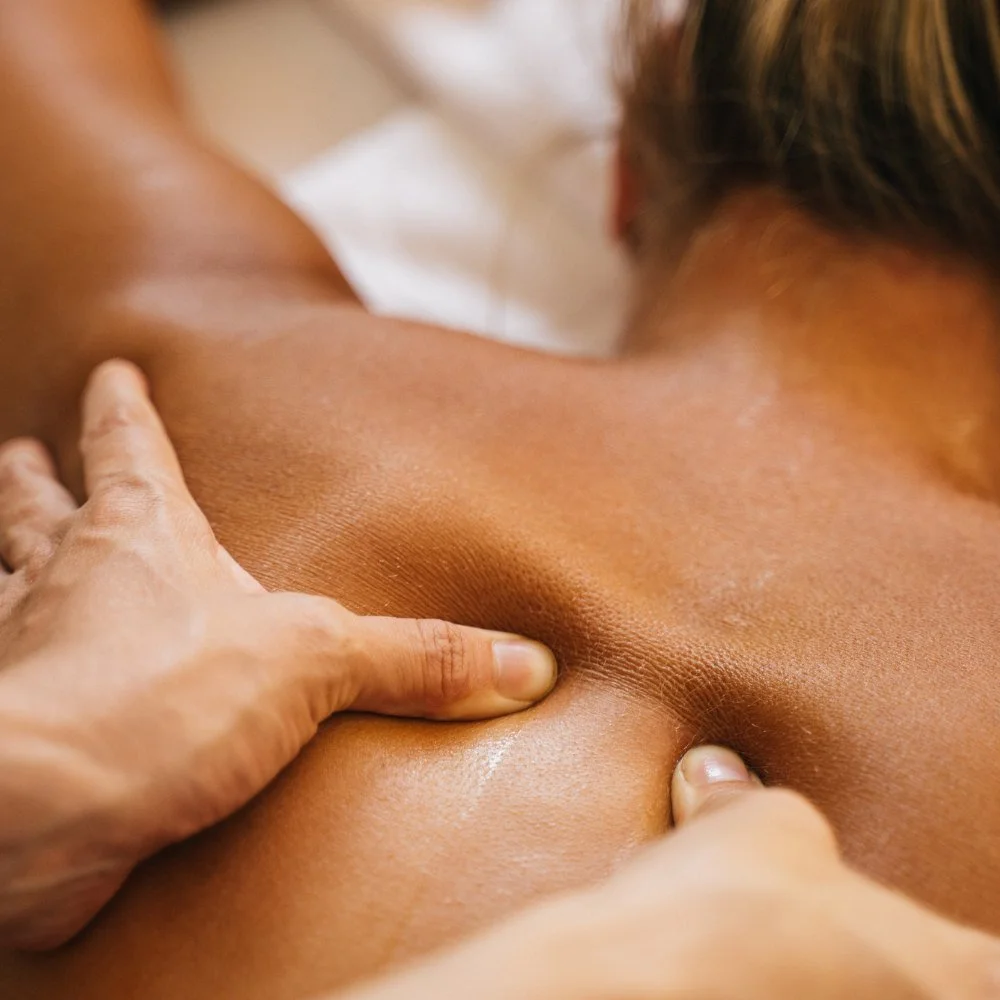
Rolf Method
Uncovering Posture Transformation and Pain Relief
What Is the Rolf Method of Structural Integration?
The Rolfing Method, also known as Rolfing Structural Integration, is a unique bodywork therapy designed to realign the body by manipulating soft tissue, particularly fascia, with such that movement and postural alignment are restored.
During our lives we pick up injuries and our posture distorts through repetitive activity. These changes compromise our physical ease of movement, and alter the freedom in which we live and function in the world.
Unlike traditional massage, Rolfing aims for long-term structural improvements, not just temporary relief.
How Does the Rolfing Method Work?
Rolfing provides relief from chronic pain, stress, discomfort and corrects muscular dysfunction to improve performance in daily, professional or sporting activities.
A well aligned body with good posture enables one to move with enhanced energetic flow and freedom, hugely increasing quality of life. The ideal behind this is that structure enables function, and so the more congruent our structure, the greater our potential to express ourselves.
MZ Therapy - Rolfing Offering
At MZ Therapy, Madeleine offers tailored Rolfing treatments in Bath and Stanton Prior that incorporate traditional techniques tailored to your wellness needs.
Madeleine specialises in therapeutic bodywork, combining yoga, yoga therapy, rolfing and sports massage. She focuses on posture, alignment, addressing deeper issues like digestive restrictions to improve mobility and overall balance.
Read more about Madeleine’s Background, training and qualifications.
The History of Rolfing: From Dr. Ida Rolf to Modern Day
Rolfing originated in the mid-20th century, pioneered by Dr Ida Rolf, a biochemist and visionary in the field of bodywork. Dr Rolf believed that the misalignment of connective tissues due to gravity resulted in pain and dysfunction. After years of study and practice, she developed the Rolfing Method, which focuses on manipulating fascia to bring the body back into alignment
Over the decades, Rolfing has evolved into a globally recognised therapy, with increasing scientific support demonstrating its effectiveness in improving posture and reducing pain.
Benefits: Rolf Method of Structural Integration
The Rolfing Method provides substantial benefits for those seeking improved posture, flexibility, and pain relief.
Here are the top 10 benefits of Rolfing:
ENHANCED POSTURE
By realigning your body's structure, Rolfing helps you stand taller and move more easily.
INCREASED ENERGY
A better-aligned body moves more efficiently, reducing fatigue and boosting energy levels.
PAIN RELIEF
It effectively alleviates chronic back, neck, and shoulder pain by addressing its root cause.
BREATHING IMPROVEMENTS
Rolfing enhances breathing by relieving tension in the ribcage and diaphragm.
IMPROVED MOVEMENT AND FLEXIBILITY
Rolfing increases mobility and flexibility by loosening tight fascia and muscles.
SPORTS PERFORMANCE
Athletes benefit from improved balance, coordination, and mobility.
INJURY RECOVERY
Helps the body recover from injuries by improving circulation and tissue function.
IMPROVED BODY AWARENESS
You’ll develop a deeper connection to your body and its movement patterns.
POST-SURGERY HEALING
It supports faster recovery and tissue repair following surgeries.
STRESS REDUCTION
By releasing tension in the fascia, it promotes relaxation and mental clarity.
Who Should Consider Rolfing?
Rolfing is ideal for individuals suffering from chronic pain, poor posture, and limited range of motion. It is particularly beneficial for:
Office workers dealing with postural issues caused by prolonged sitting
Athletes seeking improved performance and injury prevention
Individuals recovering from surgeries or injuries
People with chronic pain conditions such as fibromyalgia or arthritis
Anyone looking to enhance their posture
What conditions are helped by Structural Integration?
Flat feet, or other foot related problems
Restores the ability to walk normally – balances the hips and re-establishes the gait
Injury recovery; once casts are removed following a breakage, muscular balance needs to be re-established
Nerve entrapment syndromes
Restless leg syndrome
RSI and tendonitis
Low back pain– by addressing all the areas that may be causing the vertebrae to be out of alignment, (i.e. arches of the feet, horizontality of the knee and hip joint), rather than just temporary symptomatic relief.
Neck pain
Shoulder pain
Sciatica
What to Expect During a Rolfing Session
During a Rolfing session, Madeleine will apply firm, targeted pressure to specific areas of the body, often focusing on the fascia and deeper layers of tissue. The session typically lasts between 60 and 90 minutes, and you may be asked to move or breathe in certain ways to help release tension.
Clients are usually fully clothed or in minimal clothing, and sessions are customised to address your body’s specific needs. After a session, many clients report feeling lighter, more aligned, and experiencing improved movement.
A series of 10 sessions, ideally over a 10-week period, is recommended, designed to systematically work through the body.
The 10-Series Rolfing Process Explained
A hallmark of Rolfing is its 10-session series, designed to systematically address the body’s structure and function. Each session has a specific goal that builds upon the previous one.
The ten sessions are structured into three parts.
-
Intention of the breath, foundations and support (feet, lower legs and knees) and "Vertical Line" (correct twisting).
-
Muscles closer to the bones including inner legs, pelvic floor, digestion and "Sacrum" (back side of the body).
-
Interchangeable with upper or lower and finale session.
Rolfing vs. Massage: What’s the Difference?
While both Rolfing and massage therapy involve working on the body's tissues, they differ in their goals and techniques.
Key Differences Between Rolfing and Massage
Rolfing focuses on long-term structural changes and improving posture, targeting the fascia for realignment.
Massage aims to relieve tension, reduce stress, and enhance relaxation, focusing on short-term relief. Find out more about massage therapy at MZTherapy here.
Unlike a relaxing massage, Rolfing can sometimes be more intense as it works deep into connective tissues to release tension and realign the body. It’s designed for long-term improvements rather than short-term relaxation.
Why Good Posture Matters
Good posture is essential not only for a confident appearance but also for overall health. Poor posture can lead to chronic pain, limited mobility, and an increased risk of injury. Rolfing helps correct postural issues by realigning the body’s structure, resulting in improved balance, reduced strain on muscles and joints, and enhanced physical performance.
Understand the importance of posture and how Rolfing can improve it.
What is Fascia and Its Role in Rolfing?
Fascia is the connective tissue that surrounds and supports muscles, bones, and organs. When fascia becomes tight or misaligned due to injury, poor posture, or stress, it can lead to pain and restricted movement. Rolfing focuses on manipulating and releasing fascia to restore the body’s alignment and improve flexibility.
Learn more about our specialised Rolfing treatments









